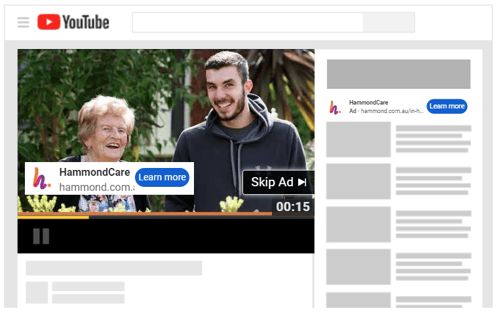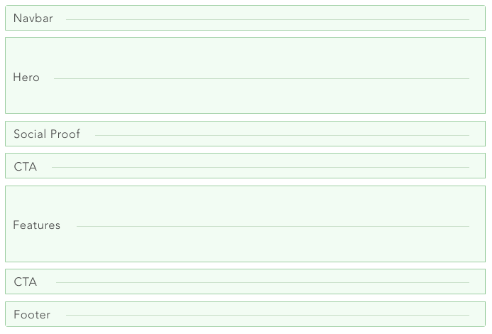In today's digital age, the healthcare industry is undergoing a significant transformation, driven in large part by the rise of online platforms and technologies. The importance of digital advertising in the healthcare sector cannot be overstated. As more and more individuals turn to the internet to research symptoms, find healthcare providers, and seek out medical advice, healthcare brands must adapt and find ways to meet their audience where they are. Digital advertising offers healthcare providers a unique opportunity to connect with potential patients, share valuable information, and position themselves as leaders in their respective fields.
Google Ads, in particular, has emerged as a pivotal tool for healthcare brands aiming to expand their reach and influence. With its vast network and sophisticated targeting capabilities, Google Ads allows healthcare providers to deliver tailored messages to specific audiences at the moments when they're most receptive. Whether a person is actively searching for a local clinic, researching a specific medical condition, or exploring treatment options, Google Ads ensures that relevant healthcare brands are front and center during these critical decision-making moments. By leveraging the power of Google Ads, healthcare brands can not only increase their visibility but also build trust and credibility with potential patients and clients. As we delve deeper into the world of digital advertising for healthcare, we'll explore the strategies, best practices, and insights that can help healthcare brands thrive in this dynamic digital landscape.
Table of Contents
1. Why Google Ads for Healthcare?
2. A Step-By-Step Guide to Creating an Account & Campaign
2.1 Google Ads Account Creation
2.2 Understanding Campaign Types
2.4 Geographic and Demographic Targetting
3.1 The Importance of Keyword Research
3.2 Tools and Techniques for Finding the Right Keywords
3.3 Understanding Negative Keywords
4.1 Tips for Writing Compelling Ad Copy
4.2 Importance of Clear Call-To-Actions
5.2 Elements of an Effective Landing Page
5.3 Importance of Mobile Optimisation
6. Understanding Google's Healthcare Advertising Policies
7. Budgeting and Bidding Strategies
7.1 Setting a Realistic Budget
7.2 Understanding Bidding Strategies
8. Monitoring and Optimising Campaigns
Why Google Ads for Healthcare?
We love recommending and using Google Ads for client marketing campaigns for a number of reasons, but if you asked me to name only three, these are what I’d give you:
The vast reach of Google's network.
In the ever-evolving realm of digital marketing, Google Ads stands out as a premier platform, especially for industries as pivotal as healthcare. But what makes Google Ads such a compelling choice for healthcare brands and providers? First and foremost, it's the vast reach of Google's network. Every day, millions of people turn to Google to seek answers, research health concerns, and find medical professionals. Being present on this platform means healthcare brands can tap into a vast audience, ensuring their services and solutions are visible to those actively seeking them.
Targeted advertising: Reaching the right audience at the right time.
Beyond sheer reach, Google Ads offers the power of targeted advertising. In the healthcare sector, where the needs and concerns of patients can be incredibly diverse, this precision is invaluable. Whether a healthcare brand wants to target a specific age group, a particular geographic location, or individuals searching for a specific treatment, Google Ads allows for such granular targeting. This ensures that the right message reaches the right audience at precisely the right time, increasing the chances of meaningful engagement and conversion.
Measurable results and ROI.
Lastly, in an industry where every investment counts, Google Ads provides measurable results and a clear return on investment (ROI). Unlike traditional advertising mediums, where impact can be nebulous at best, Google Ads offers detailed insights into campaign performance. Healthcare brands can track everything from click-through rates and website visits to appointment bookings and patient inquiries. This data-driven approach means that healthcare providers can continually refine their strategies, ensuring optimal performance and a tangible ROI. In essence, Google Ads offers healthcare brands a combination of reach, precision, and measurability, making it an indispensable tool in modern healthcare marketing.
A Step-by-Step Guide to Creating an Account
Embarking on the Google Ads journey begins with setting up an account, a process that's both straightforward and crucial for the success of your campaigns.
Google Ads Account Creation
Starting your advertising journey begins at the Google Ads homepage. Here, brands should sign up using a business email to ensure professionalism and to separate campaign-related communications from other business activities.
Business Information
Once signed up, the platform will prompt you to input essential details. This includes your business name, which should be consistent with other online presences, your official website, and the physical location of your healthcare facility or business. This information helps Google Ads tailor its services to your specific needs and ensures your ads are relevant to your audience.
Billing Details
Before launching campaigns, you'll need to set up your payment methods and preferences. Google Ads offers various payment options, ensuring flexibility for businesses of all sizes. It’s important to note that you don’t need to enter this information when you create an account, but you will need to do so before your ads are approved.
Understanding Campaign Types and Their Relevance to Healthcare
Google Ads offers a plethora of campaign types, each tailored to different marketing objectives. For healthcare brands, understanding the nuances of each can make all the difference.
Search Campaigns
These campaigns are ideal for services or treatments that potential patients frequently search for. For instance, phrases like "dentist near me" or "best skincare clinic" can trigger your ads, connecting you with individuals actively seeking your services.

Display Campaigns
If you're looking to boost brand awareness, especially for new clinics, innovative medical products, or unique health services, display campaigns are your best bet. These ads appear on various websites and can include graphics, making them visually appealing and effective.

Video Campaigns
Video content has seen a meteoric rise in popularity. For healthcare brands, video campaigns can showcase patient testimonials, provide behind-the-scenes looks at facilities, or demystify complex medical procedures in relatable terms.

Shopping Campaigns
For those in the healthcare sector with e-commerce platforms, shopping campaigns can promote healthcare products or equipment directly within the search results, streamlining the purchase process.
App Campaigns
With the rise of telehealth and digital health solutions, many healthcare brands now offer dedicated mobile apps. App campaigns can promote these platforms, driving downloads and user engagement.
Setting Campaign Goals
Every successful campaign starts with a clear goal. Google Ads offers various objectives tailored to different business needs.
Lead Generation
For healthcare providers looking to expand their patient base, lead generation campaigns can capture potential patient details, facilitating appointment bookings or inquiries.
Brand Awareness
Whether you're launching a new healthcare facility or introducing a groundbreaking service, brand awareness campaigns can put you on the map, ensuring your target audience knows who you are and what you offer.
Website Traffic
These campaigns aim to drive potential patients or clients to specific landing pages, be it service descriptions, blog posts, or contact forms.
Sales/Conversions
Especially relevant for e-commerce platforms within the healthcare sector, these campaigns encourage online purchases, be it health products, equipment, or paid online consultations.
Geographic and Demographic Targeting
Reaching the right audience is half the battle. With Google Ads, healthcare brands can target specific regions or demographics, ensuring relevance and effectiveness.
Local Targeting
Local clinics or services can target ads to specific regions, ensuring they reach potential patients in their vicinity.
Demographic Considerations
Different health services may appeal to different demographics. For instance, a maternity clinic might target women aged 25-35, ensuring their ads reach the most relevant audience.
Ad Extensions for Healthcare Brands
To enhance the effectiveness of your ads, Google offers various extensions, adding layers of functionality to your campaigns.
Sitelink Extensions
These extensions can guide users to specific pages on your website, be it 'Services', 'Testimonials', or 'Contact Us', enhancing user experience and boosting conversions.
Call Extensions
Especially relevant for healthcare providers, these extensions allow potential patients to call your facility directly from the ad, streamlining the appointment booking process.
Location Extensions
For patients looking to visit in person, these extensions can guide them to your physical location, ensuring they find their way with ease.
Keyword Research and Selection
In the realm of digital advertising, particularly with platforms like Google Ads, the power of keywords cannot be underestimated. They act as the bridge between a potential patient's query and a healthcare provider's solution, making their research and selection a cornerstone of effective online marketing.
Importance of Keyword Research in Healthcare Advertising
The healthcare sector is vast and diverse, encompassing a myriad of treatments, services, and products. As individuals turn to search engines with their health queries, concerns, and needs, it's the keywords they use that determine which ads they see. For healthcare brands, understanding and leveraging this user behavior is crucial. Effective keyword research ensures that your ads appear in front of the most relevant audience - those actively seeking the services or products you offer. By aligning your ad campaigns with the actual search terms and phrases used by potential patients, you not only increase the visibility of your ads but also enhance their effectiveness, driving meaningful engagement and tangible results.
Tools and Techniques for Finding the Right Keywords
The digital landscape offers a plethora of tools designed to aid in keyword research. Platforms like Google's Keyword Planner can provide insights into the search volume of specific terms, suggest related keywords, and even forecast performance. Beyond these tools, a deep understanding of your target audience, their concerns, and the language they use can be invaluable. Techniques such as analyzing website traffic, monitoring social media discussions, or even surveying existing patients can offer a goldmine of keyword ideas. By combining these insights with the data from keyword research tools, healthcare brands can curate a list of terms that resonate with their audience and align with their services.
At Hawk Health, we prefer to use a paid tool like Ahrefs as it provides much more detailed information and a more comprehensive keyword list.
Understanding Negative Keywords and Their Role
While the right keywords can drive success, it's equally important to recognize the terms that might not be a good fit. Enter negative keywords. These are terms that, when included in a user's search query, ensure your ad doesn't appear. For instance, a dermatology clinic offering cosmetic treatments might use "acne home remedies" as a negative keyword to ensure they don't attract users looking for DIY solutions. By effectively leveraging negative keywords, healthcare brands can refine their ad targeting, ensuring they don't waste resources on irrelevant clicks and instead focus on potential patients genuinely interested in their offerings.
Crafting Effective Ad Copy
In the vast digital advertising space, where countless ads vie for a user's attention, the content of your ad can make all the difference. Crafting effective ad copy is both an art and a science, especially in the healthcare sector, where trust, clarity, and empathy are paramount.
Tips for Writing Compelling Ad Copy that Resonates with Healthcare Consumers
The healthcare domain is deeply personal, and your ad copy should reflect that. Begin with understanding your audience's needs, concerns, and emotions. Addressing these directly can create an immediate connection. Use language that is both professional and compassionate, avoiding jargon that might alienate or confuse. Highlight the benefits of your service or product, not just its features. For instance, instead of merely stating that a clinic uses state-of-the-art equipment, emphasize the comfort, accuracy, or speed this brings to a patient's experience. Authenticity is key; avoid over-the-top promises and always ensure that your ad copy aligns with the reality of what you offer.
Importance of Clear Call-to-Actions (CTAs)
While compelling ad copy can capture attention, a clear call-to-action guides the user on what to do next. In the healthcare sector, CTAs should be direct and unambiguous. Whether you want potential patients to book an appointment, read patient testimonials, or learn more about a specific treatment, your CTA should guide them clearly. Phrases like "Book Now," "Learn More," or "Contact Us Today" can be effective. Remember, the goal is to make the user's journey from reading the ad to taking action as seamless as possible.
A/B Testing for Ad Optimization
The digital advertising landscape is dynamic, and what works today might not be as effective tomorrow. A/B testing, or split testing, allows healthcare brands to continuously refine their ad copy for optimal results. By creating two versions of an ad with varied copy, CTAs, or even visuals, and then serving them to similar audience segments, brands can gauge which version resonates more. Over time, this iterative process can lead to more effective ads, ensuring that resources are utilized efficiently and that potential patients receive messages that truly resonate.
Landing Page Best Practices
The journey of a potential patient or client doesn't end with a click on your ad; in fact, that's just the beginning. The subsequent experience, primarily determined by the landing page they're directed to, plays a pivotal role in converting interest into tangible action.
The Role of the Landing Page in Converting Ad Clicks to Patients or Clients
A landing page serves as the first impression of your healthcare brand post-click. It's where the promises made in the ad are validated. For healthcare brands, this page can be the difference between acquiring a new patient or losing a potential one. A well-structured landing page can provide essential information, address concerns, and guide visitors towards taking the desired action, be it booking an appointment, signing up for a newsletter, or making a purchase.
Elements of an Effective Healthcare Landing Page
An effective healthcare landing page should be a blend of clarity, trustworthiness, and actionability. Key elements include:
- Headline: A clear, concise headline that resonates with the ad's message.
- Content: Relevant information presented in an easily digestible format, using bullet points, short paragraphs, and visuals.
- Trust Signals: Testimonials, patient reviews, certifications, or any other indicators that can build trust.
- Clear CTAs: Direct and unambiguous prompts guiding visitors on the next steps.
- Visuals: High-quality images or videos that complement the content and enhance user engagement.
In terms of layout, we really like this structure, provided by Julian Shapiro:

Importance of Mobile Optimization
With a significant portion of users accessing websites via mobile devices, ensuring your landing page is mobile-optimized is no longer optional. A mobile-optimized page ensures that content is easily readable, navigation is seamless, and CTAs are easily accessible, regardless of the device's screen size.
Understanding and Abiding by Google's Healthcare Advertising Policies
Navigating the digital advertising landscape requires not just strategic acumen but also a keen understanding of the rules of the game, especially in sensitive sectors like healthcare.
Overview of Google's Policies for Healthcare Advertising
Google has stringent policies for healthcare advertising to ensure user safety and the dissemination of accurate information. These policies cover a range of areas, from the prohibition of advertising certain products to mandating specific disclosures for others. For healthcare brands, understanding these nuances is crucial to ensure their ads are approved and reach their intended audience.
Common Pitfalls and How to Avoid Them
Some frequent missteps include making unverified claims, omitting essential disclaimers, or advertising prohibited products. To avoid these pitfalls, always base your ad content on verifiable facts, stay updated with Google's policy changes, and consider seeking legal counsel or consulting with a digital marketing expert familiar with the healthcare domain.
Budgeting and Bidding Strategies
Effective digital advertising isn't just about crafting the perfect ad; it's also about ensuring your financial resources are utilized optimally.
Setting a Realistic Budget for Your Ad Campaigns
Determine your budget based on clear objectives. Whether you're looking to boost brand awareness, drive website traffic, or increase patient bookings, your budget should align with your goals, factoring in aspects like target audience size, campaign duration, and expected conversion rates.
There are 2 major ways to choose the actual amount you want to spend:
1. What you can afford to pay each month - if you can afford to spend $2,000 per month, then this is your budget. This approach is simple, but misses out on crucial data that can help ensure you are getting the best performance and return on investment.
2. How much you can afford to pay per lead/client - this approach takes time, and some calculations, but it a much more accurate way to set a budget. You'll need to be familiar with a few concepts such as Cost Per Acquisition to use this approach (P.S. Need a hand? Speak with an expert today)
Understanding Bidding Strategies and Choosing the Right One for Your Goals
Google Ads offers various bidding strategies, from cost-per-click (CPC) to cost-per-impression (CPM) or cost-per-conversion. The right strategy aligns with your campaign goals, whether it's maximizing visibility, clicks, or conversions.
Monitoring and Optimizing Your Campaigns
The digital advertising landscape is dynamic, and success requires constant vigilance and adaptability.
Importance of Regular Monitoring and Analysis
Regularly monitoring your campaigns allows you to gauge their effectiveness, identify areas of improvement, and make timely adjustments. It ensures that your ads resonate with your audience and that your budget is used efficiently.
Tools and Metrics to Track Campaign Performance
Platforms like Google Analytics offer a wealth of data, from click-through rates and bounce rates to conversion metrics. These insights can provide a clear picture of your campaign's performance and the ROI it's delivering.
Tips for Ongoing Optimization and Maximizing ROI
Optimization is an ongoing process. Regularly A/B test different ad copies, landing pages, or even CTAs. Stay updated with industry trends, and don't hesitate to tweak your strategies based on the insights you gather. Remember, in digital advertising, even small adjustments can lead to significant improvements in ROI.
Navigating the Digital Marketing Landscape for Success
The digital age presents a plethora of opportunities for brands, especially in sectors as vital as healthcare. From understanding the modern healthcare consumer's journey to leveraging the power of platforms like Google Ads, success lies in strategic planning and execution. Crafting compelling ad copy, optimizing landing pages, and understanding the nuances of search and discovery marketing are all integral components of a holistic digital marketing strategy. While search marketing meets the immediate needs of users actively seeking solutions, discovery marketing plants the seeds of interest, nurturing potential customers and building brand awareness. As we've explored, setting up and optimizing ad campaigns, understanding Google's intricate policies, and effectively budgeting are all crucial steps in this journey. Regular monitoring, A/B testing, and staying updated with industry trends can further refine your approach, ensuring maximum ROI. In this dynamic digital landscape, brands that can strike the right balance between these strategies, tools, and insights are poised for sustained success. Embrace the digital revolution, and let your brand shine in this era of endless possibilities.
Published by Brock Ashton
.png?width=60&name=Untitled%20design%20(37).png)
Brock is the founder of Hawk Health Digital, an experienced marketer and health and fitness enthusiast. With almost 10 years of experience in the industry, coupled with a Bachelors degree in Commerce and a Masters's degree in Marketing, he is an expert when it comes to helping health and wellness businesses achieve their growth dreams. When he isn't working you'll likely find him at a Japanese restaurant or on the beach with his wife, daughter, and their dachsund.
.png?width=200&name=Health%20Hawk%20Digital_Horizontal%20(3).png)




